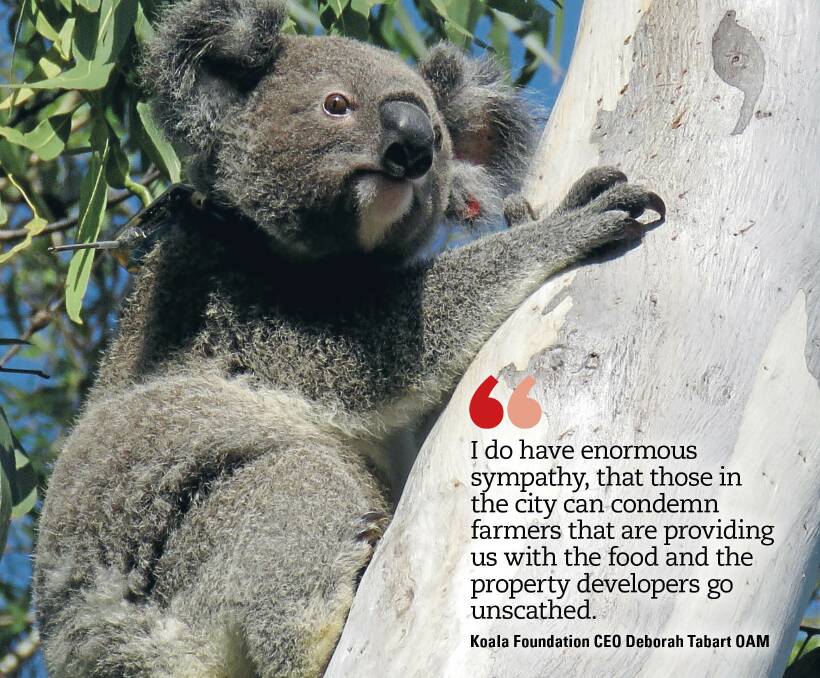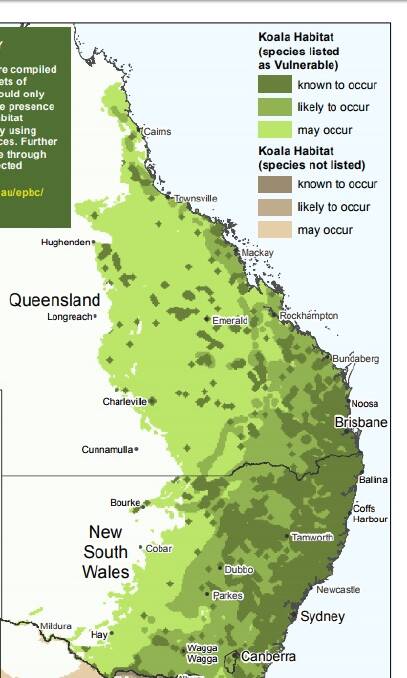
KOALA experts say stronger land clearing laws will do little towards preserving koala populations due to inaccurate mapping data and a lack of balanced cleared and timbered land.
Subscribe now for unlimited access to all our agricultural news
across the nation
or signup to continue reading
The Koala Foundation estimates there are less than 100,000 koalas left in Australia with loss of habitat usually the first to be blamed.
But, as found in a University of Queensland study released last year, cars and chlamydia were the major cause of a rise in koala deaths from 1997 to 2013 in south-east Queensland.
In those areas the population declined by about 80 per cent during that time.
Koala Foundation CEO Deborah Tabart OAM said urban development was a major threat to koalas and the same protections around clearing should apply in the south east.
“I do have enormous sympathy, that those in the city can condemn farmers that are providing us with the food and the property developers go unscathed,” she said.
Ms Tabart slammed the government’s mapping system as inaccurate and said producers needed to be given incentives such as reduced rates if they were to be forbidden from grazing in protected areas.

“They’re never accurate and they like being not accurate, this is a divide and conquer tactic,” she said.
“Our maps are from what is actually on the ground, we produce the maps of vegetation.”
- Read more: ‘Groundhog Day’ on veg laws for Qld farmers
Ecological historian and former forester Vic Jurskis from Eden, NSW, offered a different view.
Mr Jurskis’ research paper into the ecological history of koalas found that the koala population was declining from unnaturally high numbers dating back to early history and were rather trying to reach a natural low density.
Referencing an ecological study in south east Queensland in 1987, Mr Jurskis said when land was sold for urban development and was no longer managed by grazing and burning, the koala population erupted.
But, Mr Jurskis said, a high density population was unsustainable and unnatural.
“The areas that koalas are disappearing from are areas that weren’t prime koala habitat...it didn’t become good koala habitat until improved pastures, until burning was disrupted,” he said.
“Burning maintains healthy forest which can support sustainable low density of koalas but because people equate high density of koalas with good things, we can’t get sensible management.”
The Koala Foundation believes there are 1000 koalas in the Redland, Logan, Brisbane and Pine Rivers (now Moreton Bay) shires compared with 30,000 in 1988.
Redland City Mayor Karen Williams said council had been undertaking conservation strategies and their wildlife ambulance responded to 292 koala calls last year.


